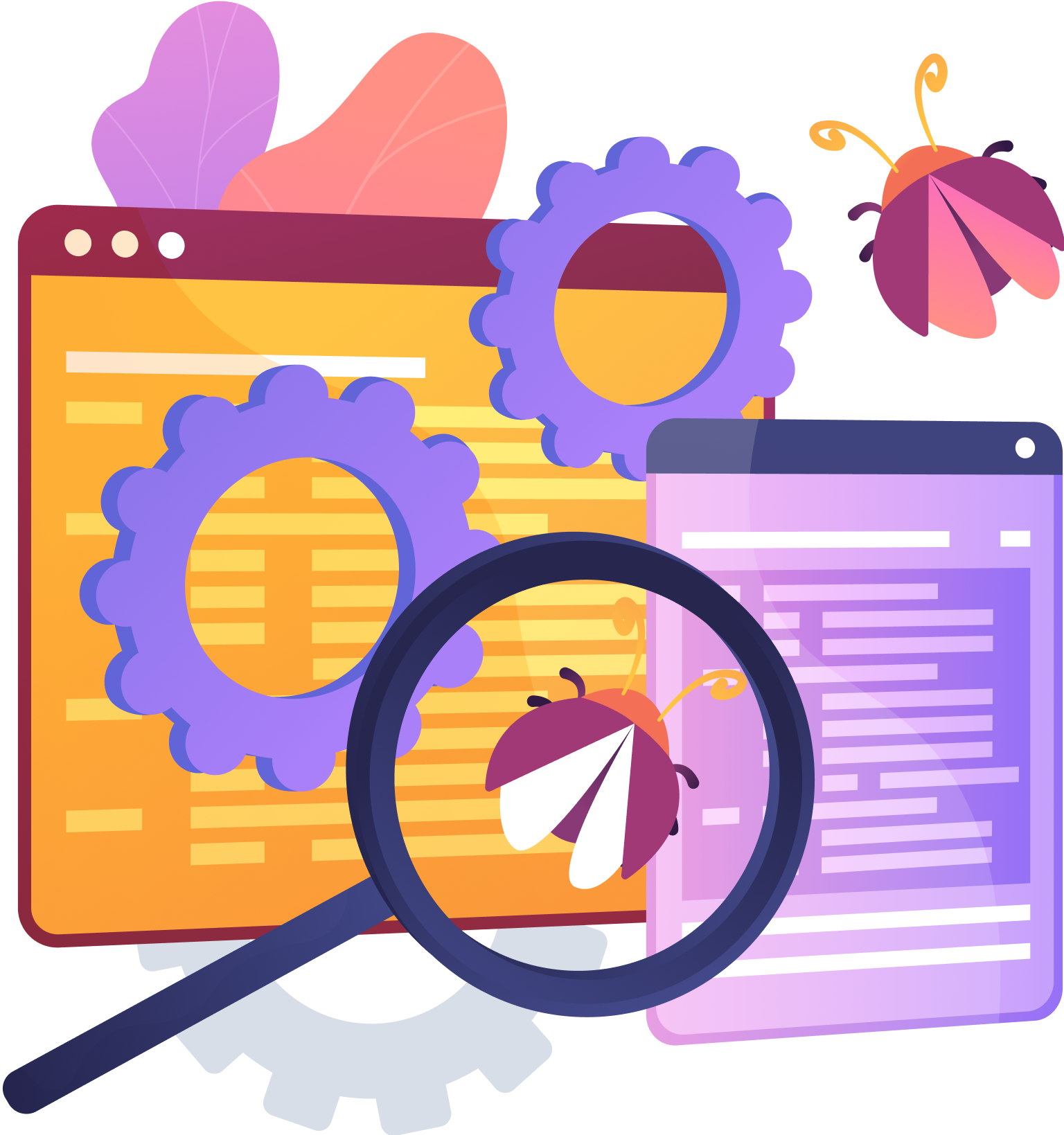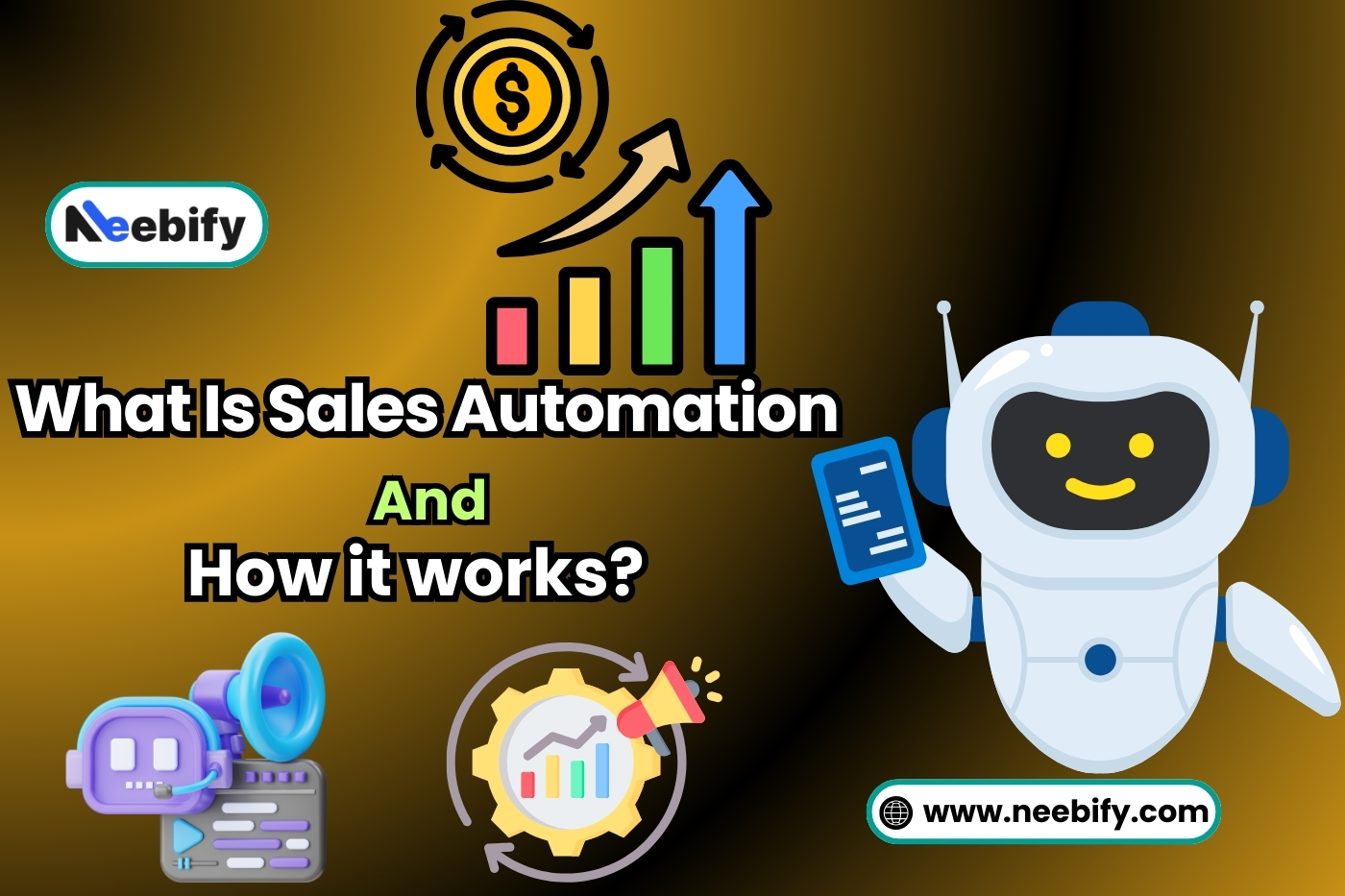Why Application Monitoring Is Important For Business Success?

In today's digital world, companies rely on apps to connect with customers and improve operations. Monitoring the app's performance is crucial. In today's digital world, companies use apps to connect with customers and improve operations.
Monitoring app performance is important. We refer to this process as application performance monitoring (APM).
It involves tracking and managing software apps to ensure they work well and provide a good user experience. This article discusses the importance of monitoring apps, types of monitoring, costs, and tips for successful deployment. This article covers the importance of monitoring apps, types of monitoring, costs, and tips for successful deployment.
Application Performance Monitoring (APM)
Application Performance Monitoring (APM) is a comprehensive approach to optimizing software application performance. APM guarantees faultless operation by painstakingly examining parameters covering performance, user experience, faults, availability, infrastructure, logs, and security in real time. These resources give valuable information about how programs work, making it easier to find and solve any issues quickly. APM helps avoid issues by predicting and solving them before they occur, keeping users satisfied and businesses running smoothly.
Types of Application Monitoring
Monitoring Performance
Performance tracking is an important part of making sure that applications work as well as they should within the expected performance limits. Performance monitoring tells you a lot about how well and efficiently apps work by carefully keeping track of key metrics like response time, throughput, and resource usage.
This information gives writers the power to find places to improve things on their own, which makes the whole user experience better. By continuously monitoring performance metrics, companies can prevent issues before they arise, optimize system resources, and provide customers with a seamless experience that fosters customer satisfaction and loyalty.
Monitoring the User Experience (UX)
UX monitoring looks at measures like transaction success rates, page load times, and user satisfaction levels to get a better understanding of how people use programs. This all-around method lets developers learn more about how users behave, find trouble spots, and improve the user experience as a whole.
Developers can make smart choices to improve usability, streamline processes, and make user-friendly interfaces that stick with them by using UX monitoring data. Ultimately, spending money on UX monitoring leads to more engaged users, better retention rates, and an edge in the digital world we live in now.
Monitoring Errors
Monitoring errors is necessary to quickly find and fix problems like crashes, exceptions, and service failures. Error tracking makes sure that programs are stable and reliable by carefully watching for strange behavior. This proactive method not only lets developers know about possible issues, but it also makes it easier to fix bugs quickly, so users don't have to deal with too many problems.
By closely monitoring error monitoring, businesses can safeguard their reputation for reliability, earn users' trust, and reduce the risk of costly downtime or performance issues.
Availability Monitoring
Monitoring uptime and accessibility is crucial to ensure the continuous availability and usefulness of programs for users. Monitoring availability is a key part of reducing downtime, improving system stability, and making sure that service delivery doesn't stop.
Businesses can improve user satisfaction, keep operations running smoothly, and protect their image by quickly finding and fixing availability problems. Businesses can easily provide seamless user experiences, build customer loyalty, and drive long-term growth in today's competitive market if they have availability monitoring in place.
Infrastructure Monitoring
Infrastructure tracking involves monitoring the networks, databases, servers, and other components within an organization that aid in application delivery. Infrastructure tracking makes sure that the most important parts of IT work well and are in good health by carefully checking on them all the time. Businesses can find and fix potential bottlenecks, make the best use of their resources, and lower the risk of system failures or downtime with this proactive method.
Businesses can keep their IT infrastructure strong, keep service levels high, and give users consistent, high-quality experiences by investing in strong infrastructure monitoring tools.
Log Monitoring
Log monitoring is the process of looking through application logs in a planned way to find patterns, oddities, and problems that could affect speed, security, or compliance. This all-around method gives you a lot of useful information for fixing problems and making applications run faster. By carefully looking at log data, coders can quickly find and fix possible problems, lower security risks, and make the system work better overall. Log tracking actively guards against potential threats, ensures adherence to rules, and safeguards the integrity of crucial data and systems.
Security Monitoring
Monitoring security is the most important thing you can do to protect private data from cyber threats and holes. Security monitoring improves the overall security of applications by constantly finding and fixing security risks within applications, security monitoring improves their overall security. This proactive method includes finding, analyzing, and fixing security problems before they happen.
This protects the privacy, integrity, and availability of data. Businesses can lower the risk of data breaches, protect their image, and build trust among users by putting in place strong security monitoring measures. By putting security tracking at the top of their list of priorities, businesses can protect themselves from new cyber threats and keep their applications and data safe.
How Much Does It Cost to Maintain An App?
Numerous factors, such as an application's complexity, user base size, necessary functionality, infrastructure, and continuing support requirements, affect its maintenance costs. Maintenance costs usually include hosting, ongoing oversight, security upgrades, bug patches, product enhancements, and regulatory compliance assurance.
Over time, these expenses are necessary to maintain the program's security, dependability, and performance. Organizations often set aside 15% to 30% of the original development cost annually for upkeep. This investment guarantees the application's long-term sustainability and efficacy in satisfying changing user requirements and industry standards.
Why Monitoring You Application is Important?
Better Monitoring in Real Time
Application Performance Monitoring (APM) transforms processes by providing real-time information about the operation of applications. This makes it easier to find and fix problems quickly. Taking proactive steps lets you solve problems quickly, which keeps users and business functions running as smoothly as possible.
APM gives companies the tools they need to maintain peak performance and dependability, which keeps users happy and makes sure the business keeps running smoothly. Strong APM solutions use advanced analytics and monitoring methods to give businesses useful information that they can use to avoid performance problems and stay ahead of the competition in today's constantly changing digital world.
Dealing with ERP Problems
Application monitoring is an important way to find and fix problems like bugs, inefficiencies, and speed bottlenecks that stop important business functions from running smoothly.
By quickly fixing these problems, businesses can improve their operations, boost productivity, and keep their enterprise resource planning (ERP) systems working well, reducing downtime and increasing operational efficiency. By managing and monitoring ERP systems proactively, businesses can spot and fix possible problems before they affect important business processes. This makes them more flexible and able to adapt to new challenges.
Improving The Performance of an Application
Companies find ways to improve the performance of their applications by carefully keeping track of performance measures and improving scalability, reliability, and speed. Taking advantage of these chances will make sure that apps always give users a smooth, responsive experience that adapts to their changing needs.
By proactively optimizing performance, businesses stay ahead of the curve, giving users better experiences and staying ahead of the competition in the digital world, which is always changing. Advanced speed tuning methods, like load balancing and caching, make applications even faster and more reliable, which makes users happy and loyal.
Better security
Cyberthreats can't get to private data if security monitoring finds and fixes security risks and application vulnerabilities. Strong security monitoring systems improve the safety of applications and IT infrastructure, reducing threats, keeping data safe, and boosting user trust. Companies can maintain people's trust, protect their valuable assets, and avoid security breaches by constantly looking for and fixing security holes.
This all-around method of security not only makes sure that the company follows the rules, but it also improves its reputation with customers and other important people. New security technologies, like intrusion detection systems and encryption protocols, make defenses even stronger against online threats that are always changing.
Reduced Operating Expenses
Quickly fixing performance problems keeps services from going down, which costs a lot, and keeps infrastructure costs low, which increases business efficiency and cuts costs. Quickly fixing problems makes the most of IT investments, which lowers costs and boosts total efficiency.
Monitoring and managing IT resources proactively helps businesses streamline processes, get the most out of their resources, and reduce downtime, all of which saves money and makes the business more flexible. Using cloud-based infrastructure and automation tools cuts down on running costs even more by getting rid of the need to buy expensive hardware and making the process of managing resources and allocating them easier.
A Better Experience for Users
Monitoring user experience data gives companies useful information about how people use their products, what they like, and where they're having trouble. This helps them make their products easier to use, more accessible, and more satisfying overall. Businesses can build customer loyalty, get people involved, and give users a great experience that sets them apart from competitors by using this data to make smart choices.
Advanced tools for tracking the user experience, like heatmaps and session replay analytics, give companies more information about how users interact with and choose goods and services. This lets them make changes to meet the changing wants and needs of their target audience. Improving the user experience all the time makes customers happy and loyal, which leads to business growth and success.
Best Practices For Application Monitoring
Establish Monitoring Goals
Setting clear goals and targets that are in line with the company's business standards and performance goals is what monitoring objectives mean. SMART (clear, measurable, attainable, relevant, and time-bound) goals are necessary to direct monitoring activities towards assisting the company in achieving its overall objectives and enhancing the efficiency and dependability of its applications.
Setting SMART goals makes it easy to keep track of your work, make sure you're on track with the organization's goals, and keep improving the speed and reliability of your applications.
Choose The Right Monitoring Tools
Picking the right APM tools is important for effective tracking. Companies should think about the features, scalability, ease of use, and compatibility of monitoring options when they are picking one. It is possible to handle applications well and fully, as long as businesses choose monitoring tools that fit their specific needs.
By buying the right monitoring tools, businesses can get accurate information about application performance, find problems quickly, and improve application performance to meet business goals and user standards.
Determine The Baseline Performance
For standard performance measurements, you need to come up with key performance indicators (KPIs) that you can use to see how well things are going now and how they're changing over time. We use these initial measures as benchmarks to assess an app's performance, identify issues, and implement modifications to enhance its reliability, efficiency, and user-friendliness.
By setting baseline performance measures, companies can keep track of their progress, find places where they can improve, and make smart choices that will improve application performance and user happiness overall.
Set Real-Time Surveillance
Businesses can reduce downtime and user effects by quickly finding and fixing problems when they use real-time monitoring. Companies can find and fix potential issues before they get worse, which ensures that services don't go down and that users are happy and productive.
We achieve this by continuously monitoring key performance parameters in real time, enabling prompt intervention to prevent performance degradation and maintain optimal program performance and reliability.
Monitor The User Experience
Businesses may learn a lot about how users interact with their apps and find ways to make them better by keeping track of user experience data that shows preferences, pain points, and areas that need work. Businesses can monitor metrics such as page load times, transaction success rates, and user satisfaction levels to enhance the usability, improve user experience, and increase customer engagement on their websites.
By monitoring user experience metrics, businesses can determine which enhancements will significantly enhance customer satisfaction, resulting in increased app usage and improved business outcomes.
Monitor The Application logs
Daily examination of application logs can reveal mistakes, unusual behavior, and security incidents that could impact performance or compliance. Organizations can safeguard the security and integrity of their data and applications by closely monitoring application logs, proactively identifying and resolving issues, adhering to all regulations, and promptly addressing emerging issues.
Monitoring application logs makes it easier to find and fix problems quickly, which protects data integrity, compliance, and the speed and availability of applications without interruption.
Put Security Monitoring Into Practice
Security tracking tools must be in place to identify and address security threats and holes before they occur. By looking for suspicious behavior, attempts to get in without permission, and possible security breaches, organizations can lower their risks, protect sensitive data, and defend against cyberattacks.
This helps make sure that their IT infrastructure and apps are safe and secure in general. Using strong security monitoring methods makes the company more resistant to cyber threats, protecting important data, and making sure that business activities don't stop.
Leverage Performance Testing
To find and fix speed problems and make sure apps work as expected in a variety of settings, you need to test their performance on a regular basis. Organizations can make sure that users have the best experiences and that their businesses do well by regularly testing applications to make sure they work well, use resources efficiently, and improve stability and scalability.
Speed testing helps companies find and fix speed problems early in the development process, which lowers the risk of users being unhappy and makes sure applications work smoothly in real-world settings.
Create Processes For Responding to incidents
To handle and fix application problems and cut down on downtime, incident reaction protocols and procedures need to be developed. Businesses can ensure prompt and effective problem resolution, minimize service delays, and uphold high levels of user satisfaction and efficiency by implementing clear procedures for identifying, reporting, and resolving issues.
Establishing robust incident response systems ensures prompt resolution of application issues, minimizing their impact on business operations and promoting user satisfaction and productivity.
Review and improve often
Businesses can identify patterns, trends, and ways to improve by regularly examining and monitoring data and performance measures. By constantly improving application speed, fixing new issues, and making the necessary changes, companies can make sure that applications continue to work well, keep users happy, and help the company succeed and stay ahead of the competition.
Regular reviews and improvements enable companies to adapt their monitoring methods to evolving business needs, continuously improve, and provide users with enhanced app experiences that align with business goals and standards.
READ ALSO: Build Cost of Events Ticket Booking App Like Ticketmaster?
Tools and software for Application Monitoring
Fresh Relic
One of the best APM tools is New Relic, which is well-known for having an extensive feature set. Because it provides real-time performance monitoring, businesses can quickly spot performance bottlenecks and track critical data. Its error tracking and user experience monitoring features also offer important information about the stability and usefulness of the program. New Relic provides a comprehensive solution for maximizing application performance and guaranteeing flawless user experiences with integrated infrastructure monitoring.
Dynatrace
Dynatrace provides advanced APM functions by utilizing analytics driven by artificial intelligence. Organizations can quickly identify and resolve issues, reducing downtime and improving application reliability, thanks to its automatic root cause analysis and anomaly detection capabilities. Moreover, Dynatrace gives businesses real-time insights into user experience and application performance, enabling them to proactively resolve possible problems and enhance application performance for higher customer satisfaction.
AppDynamics
AppDynamics provides thorough insight into user experiences, business transactions, and application performance. Organizations may discover performance bottlenecks, obtain deep insights into application performance data, and enhance application performance to drive desired business objectives with powerful monitoring features. AppDynamics helps businesses make data-driven decisions to improve application performance and user happiness.
Splunk
Splunk distinguishes itself as a flexible platform with broad data analytics, security monitoring, and log monitoring features. Thanks to its log monitoring tools, organizations can quickly analyze application logs, spot trends, and troubleshoot issues affecting compliance or performance. Furthermore, Splunk's security monitoring features enable businesses to proactively identify and address operational problems and security risks, protecting the security and integrity of their data and applications.
How Gaming PC App Monitoring Is Different From Traditional Application Monitoring
Traditional application monitoring is not the same as gaming PC app monitoring. It concentrates on specific performance indicators that are essential for fluid gaming PCs and monitors, including frame rate, GPU temperature, and CPU utilization. It has hardware monitoring for RAM, CPU, and GPU to find possible faults or bottlenecks. It also monitors game-specific parameters like network performance and in-game latency, ensuring a solid online gaming experience.
Users can ensure hardware health and maximize performance with features for cooling and overclocking. The ultimate goal of gaming PC app monitoring is to improve the overall gaming experience by offering insights into hardware health and performance parameters for the best possible gameplay.
How Technanosoft Assists With Application Monitoring
Technanosoft Technologies offers creative solutions for efficient application monitoring in the quickly changing digital ecosystem. Companies may guarantee peak efficiency, user contentment, and safety by using cutting-edge technologies and all-inclusive tools.
The monitoring systems from Technanosoft Technologies provide timely problem-solving, proactive issue identification, and ongoing optimization. By utilizing these tools, companies can easily handle the intricacies of application management and promote a robust and effective digital ecosystem. Technanosoft Technologies can help you improve your application monitoring to create a more effective, user-focused, and future-ready online presence.
FAQ's for Application Monitoring
Q.1: why monitoring your application is important?
A few advantages of application monitoring are performance gains, a better user experience, higher security, less downtime, and optimal resource usage. It also assists in spotting and resolving such problems before they affect customers or company operations.
Q.2: What role does application monitoring play in the prosperity of businesses?
Successful application monitoring ensures seamless operations, stops revenue loss from downtime, and upholds customer satisfaction, directly impacting corporate performance. Additionally, it helps companies allocate resources optimally, promote continuous improvement, and make data-driven decisions.
Q.3: What kinds of problems may application monitoring assist in identifying?
Numerous problems, including infrastructure breakdowns, security flaws, performance bottlenecks, errors, and compliance infractions, can be found with application monitoring. You may maintain application security and dependability by quickly identifying and resolving these issues through data analysis and critical metric tracking.
Q.4: How does security get better with application monitoring?
Application monitoring is essential for improving security since it may identify and address potential threats and vulnerabilities. By monitoring for anomalies, illegal access attempts, and suspicious activity, we can prevent cyberattacks and minimize risks.
Q.5: Is it possible to optimize resource use with application monitoring?
Yes, by offering insights into performance bottlenecks, capacity planning, and resource usage trends, application monitoring helps businesses maximize resource utilization. Organizations can save money and increase operational efficiency by locating inefficient areas and allocating resources more wisely.









